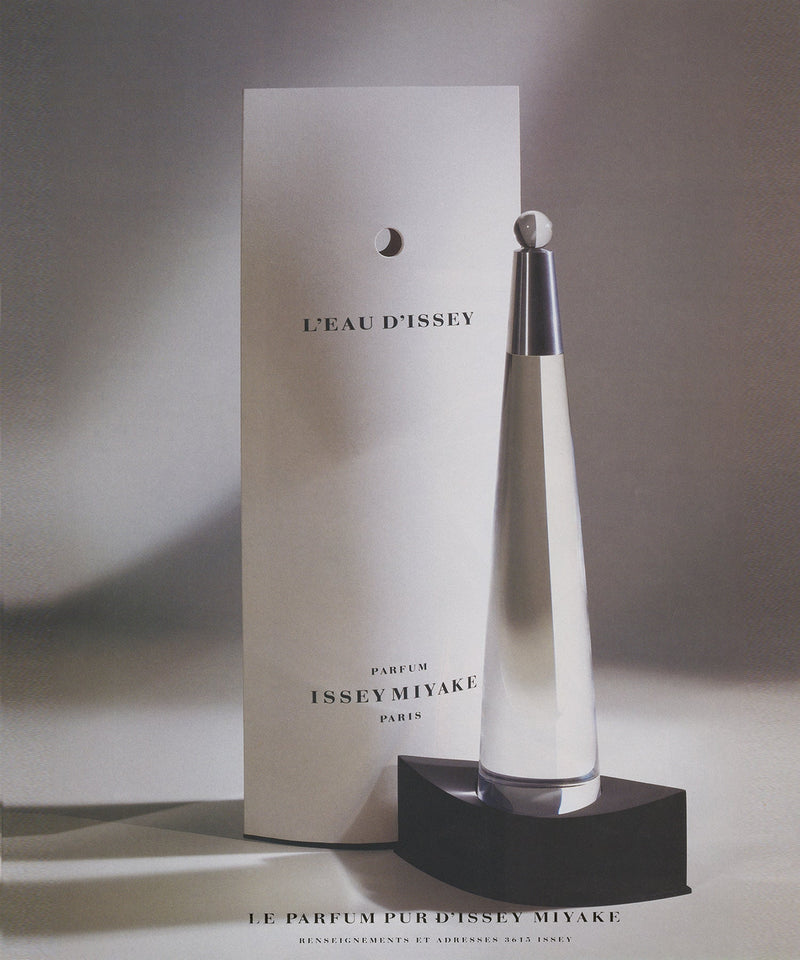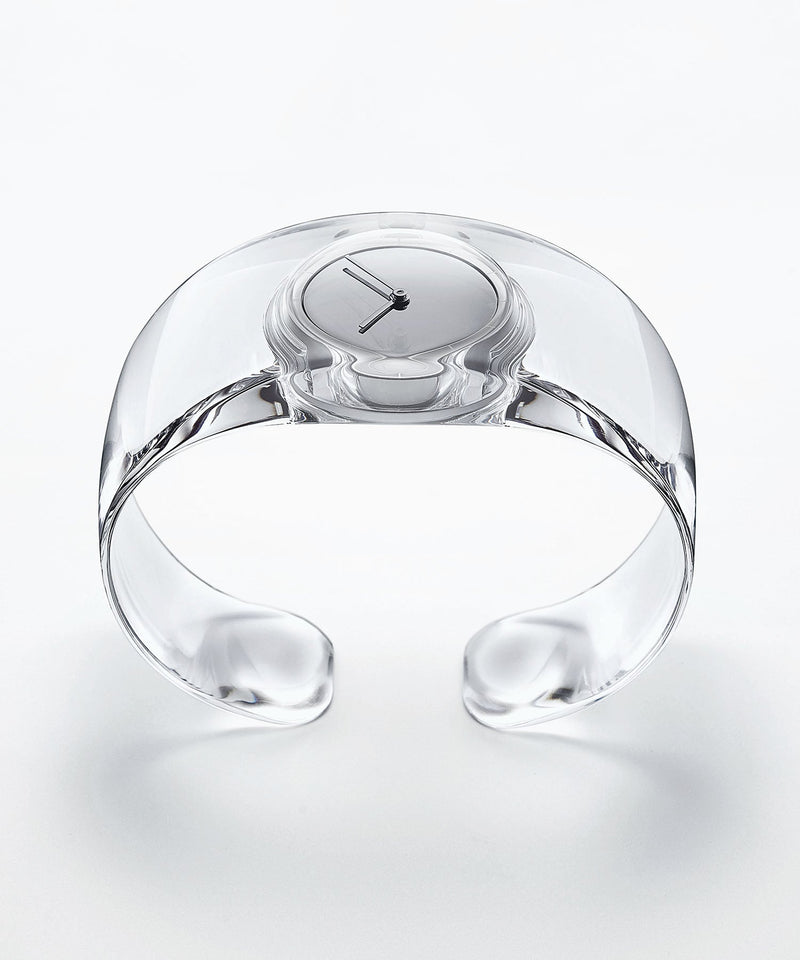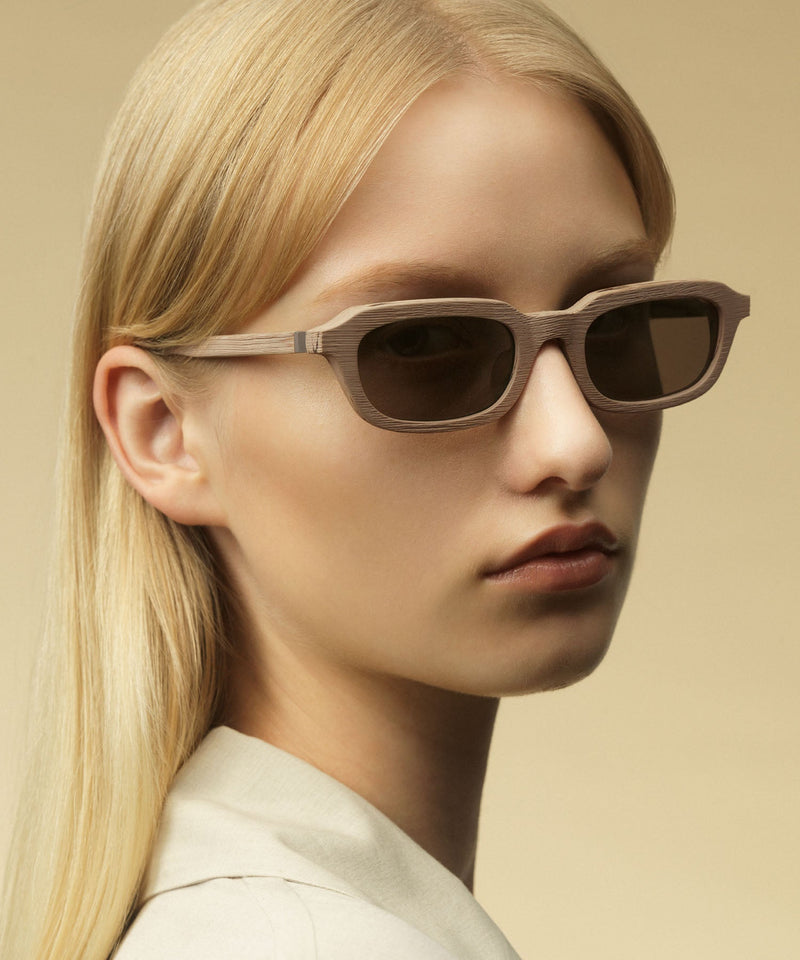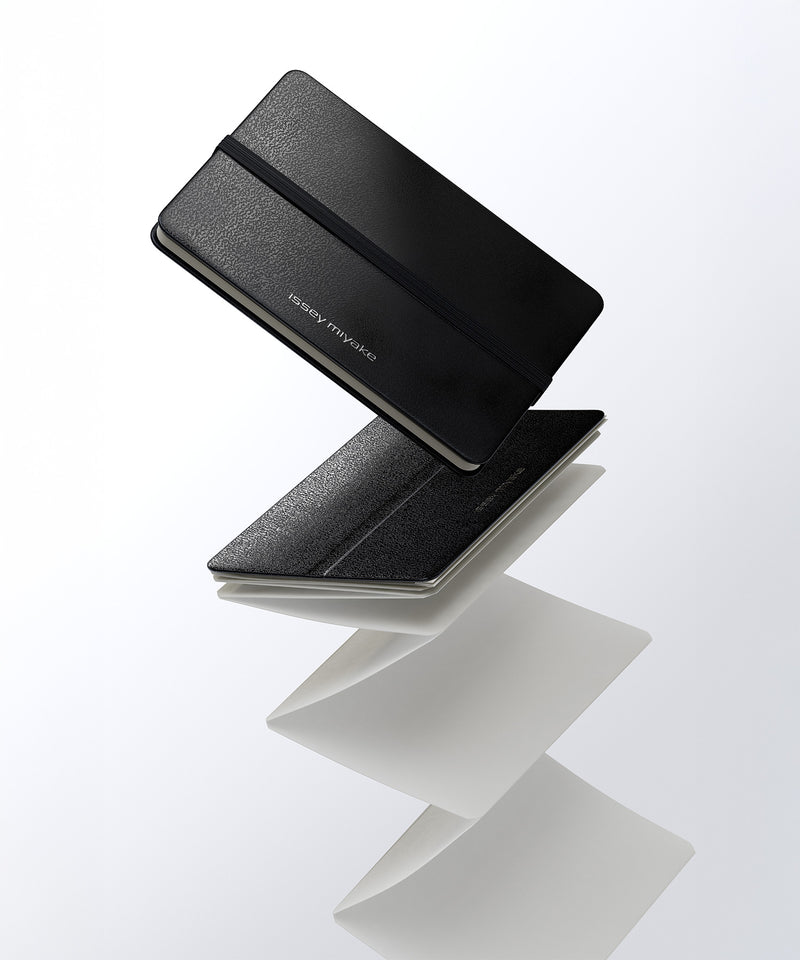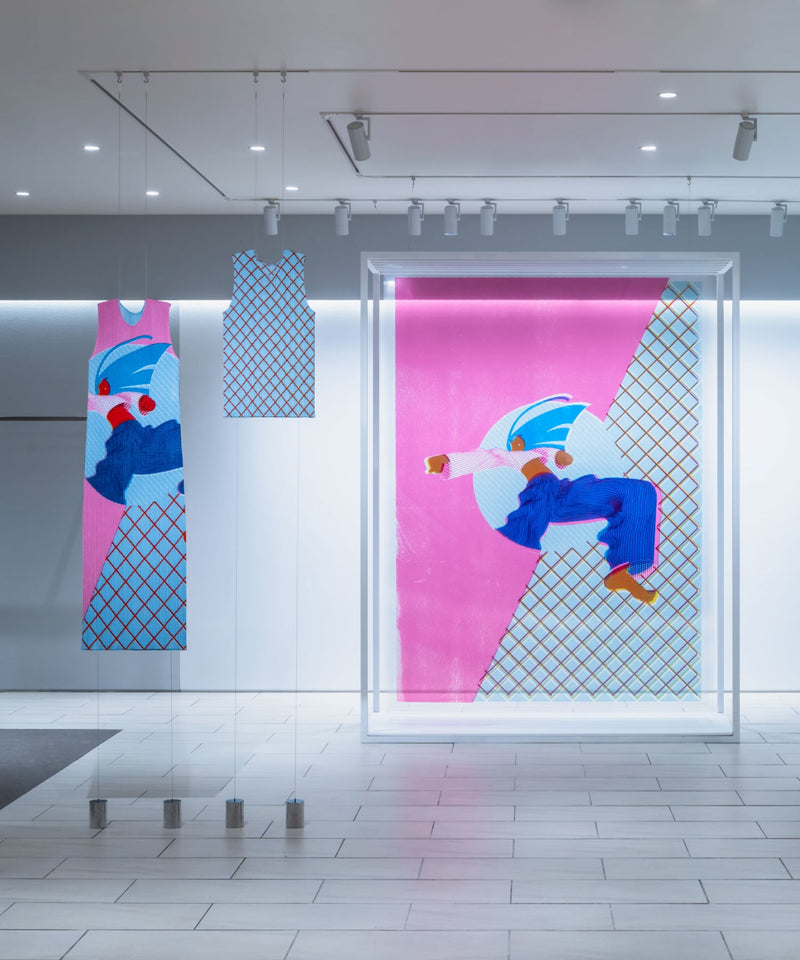A day in the life of Hélène
With PLEATS PLEASE
Part 1: Going to work 1- Studio visit
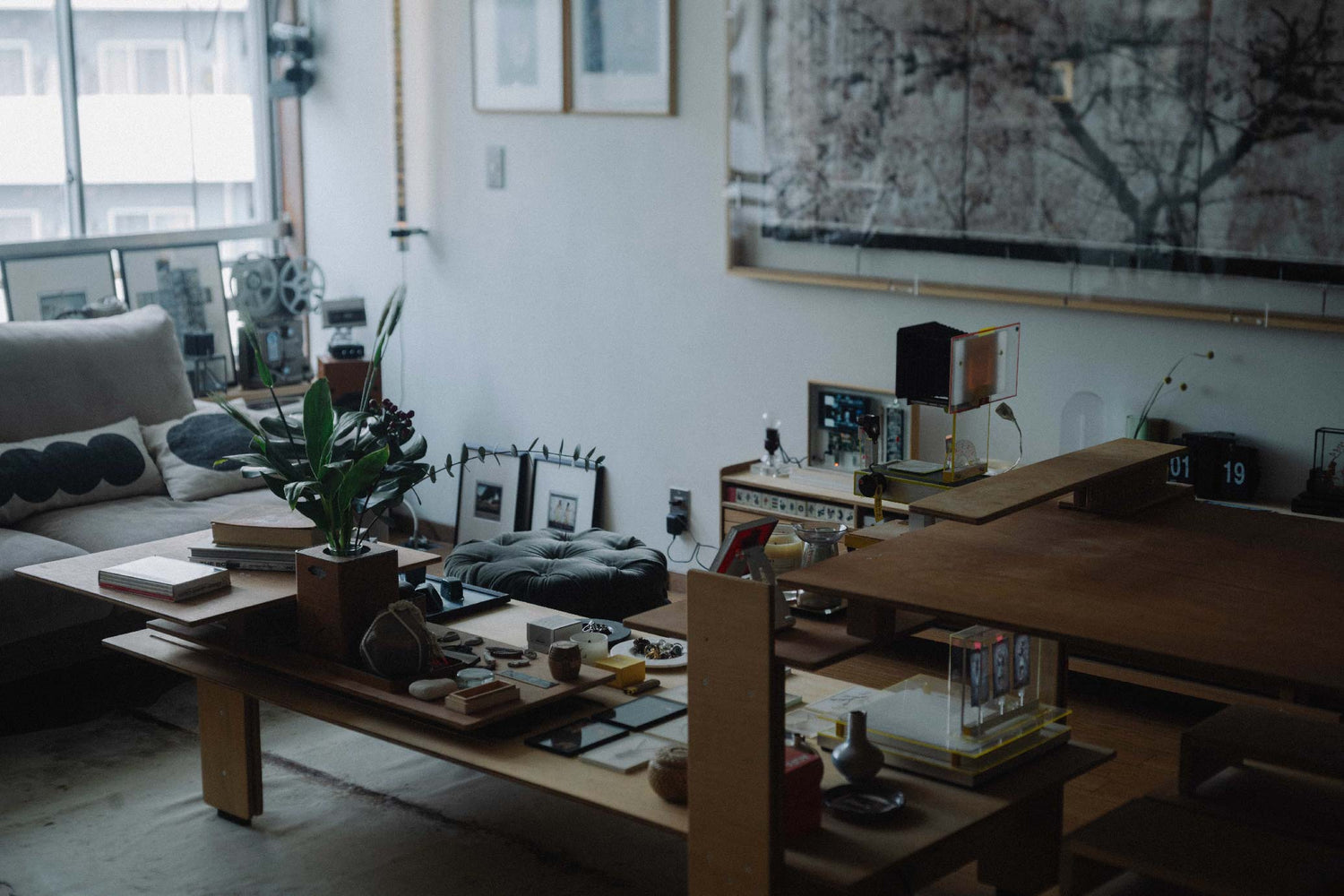
Her name is Hélène Kelmachter. She was born in France.
She works as a curator, planning cultural projects and organizing exhibitions.
She has been working for the Fondation Cartier pour l’art contemporain in Paris for more than 15 years, and also as a freelance curator in various countries.
Appointed cultural attaché at the French Embassy in Japan in 2007, she spent five years in Tokyo before moving on to Buenos Aires and Rome. She has been living again in Tokyo since the fall of 2023.
Hélène wakes up every morning at 7:07.
There is a reason for setting the alarm to that specific time: it was when her only daughter was born.
She gets ready, gets dressed, and enjoys a large pot of tea, as well as a hot water with ginger and lemon.
And then it is time to go to work.
Her schedule is far from routine; that’s part of the job.
Some days there may be meetings in the office, some days she coordinates projects under development or writes texts for exhibition catalogues or various material as press releases. It all depends. Today, she is visiting an artist's studio, which is one of the things she likes the most.
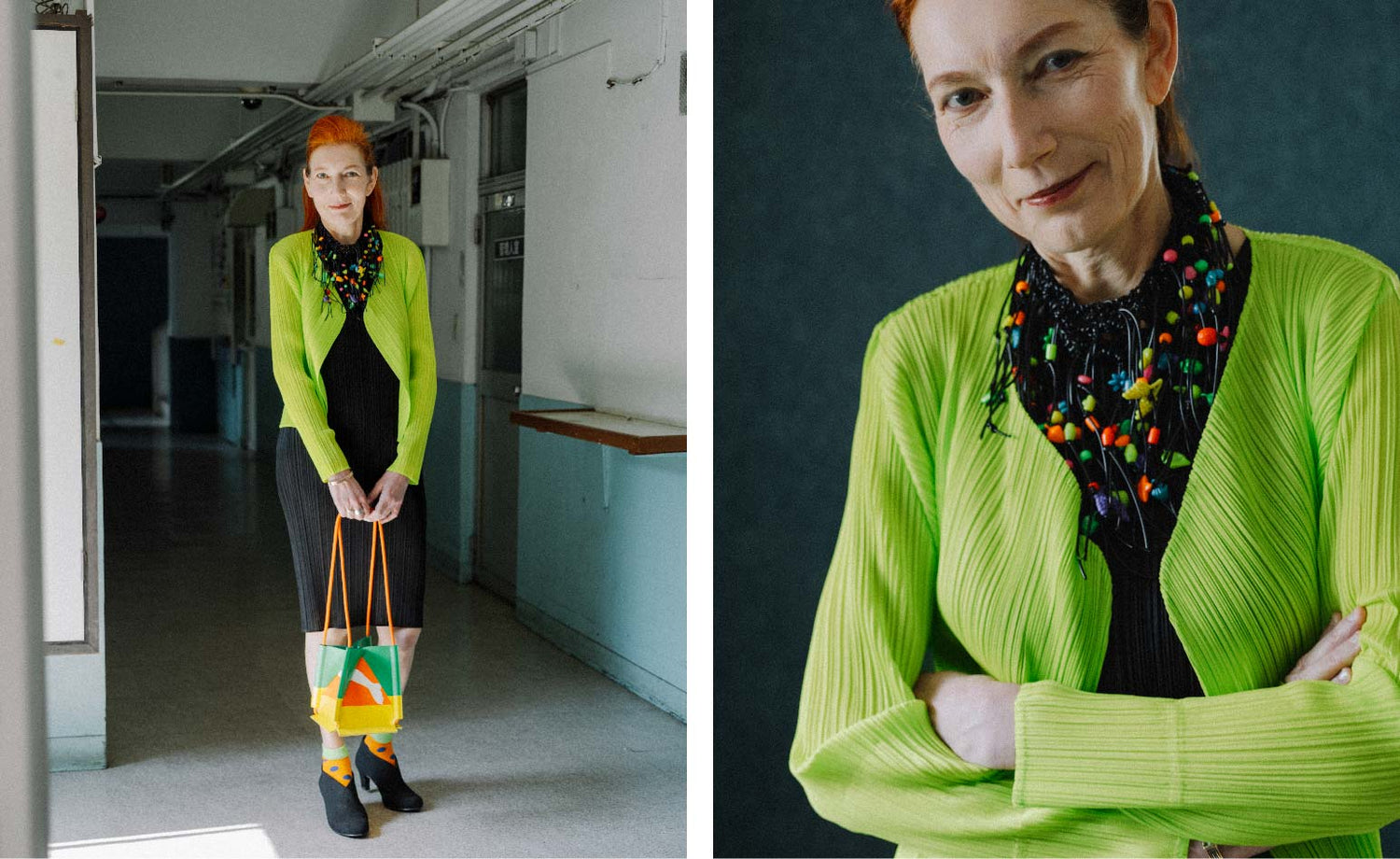
As a child, she loved to watch her great uncle, a painter, at work in his atelier.
Laid out before him were tools, paints and brushes from which works of art emerged.
It seemed magical.
It was probably that thrill that propelled Hélène toward her current job.
Even if her other passion was for volcanoes, she had already decided in her teens that she wanted to communicate the excitement and emotion of art to as many as possible and wanted to work alongside creative people.
That makes studio visits important, something she looks forward to with excitement. She sets off, excited and eager to meet artists.
This is a carousel of Image carousel: Article - PLEATS PLEASE ISSEY MIYAKE SPECIAL PROJECTS A day in the life of Hélène- Everyday life with Pleats Please Part 1. Use pagination to navigate through the items.. Use Play Slide Autoplay Button to autoplay/pause the carousel.
K-NARF & SHOKO, a French and Japanese art duo, have their studio on the 8th floor of a central Tokyo building.
A large photograph of cherry blossoms is displayed in a light, handmade frame. There is a distinctive luster on the surface of the photograph created by outputting the photograph to a printer and then applying transparent adhesive tape by hand to transfer the image.
The duo uses ordinary cameras and printers, but transfers the images to tape by hand, making all of their works a combination of digital and analog, past, present and future, reality and imagination, research and playfulness. They call the technique “TAPE-O-GRAPHY.”
This is a carousel of Image carousel: Article - PLEATS PLEASE ISSEY MIYAKE SPECIAL PROJECTS A day in the life of Hélène- Everyday life with Pleats Please Part 1. Use pagination to navigate through the items.. Use Play Slide Autoplay Button to autoplay/pause the carousel.
Hélène has known them for quite a long time and did even a project with K-NARF in Tokyo in 2009. Viewing the photograph of Kyoto cherry blossoms, Hélène says,
“This is the first time I’ve seen this series! Even if you are using the same Tape-o-graphy technique as for your “HATARAKIMONO PROJECT”, it is very different spirit!”
K-NARF describes the process of creating works of different sizes from 10 cuts of cherry blossom photographs.
He goes on to talk about his exhibition and photography in Hong Kong, where he was until just two days earlier. This is part of the “HATARAKIMONO PROJECT,”
a collection of portrait photographs of people with their working clothes and sometimes their tools. He shares the difficulties they found photographing in Hong Kong.
And he speaks about their plans for the future. Sometimes Hélène asks a question, curious to know everything about their going-on and new projects. K-NARF answers. SHOKO provides additional information. The conversation could go on forever.
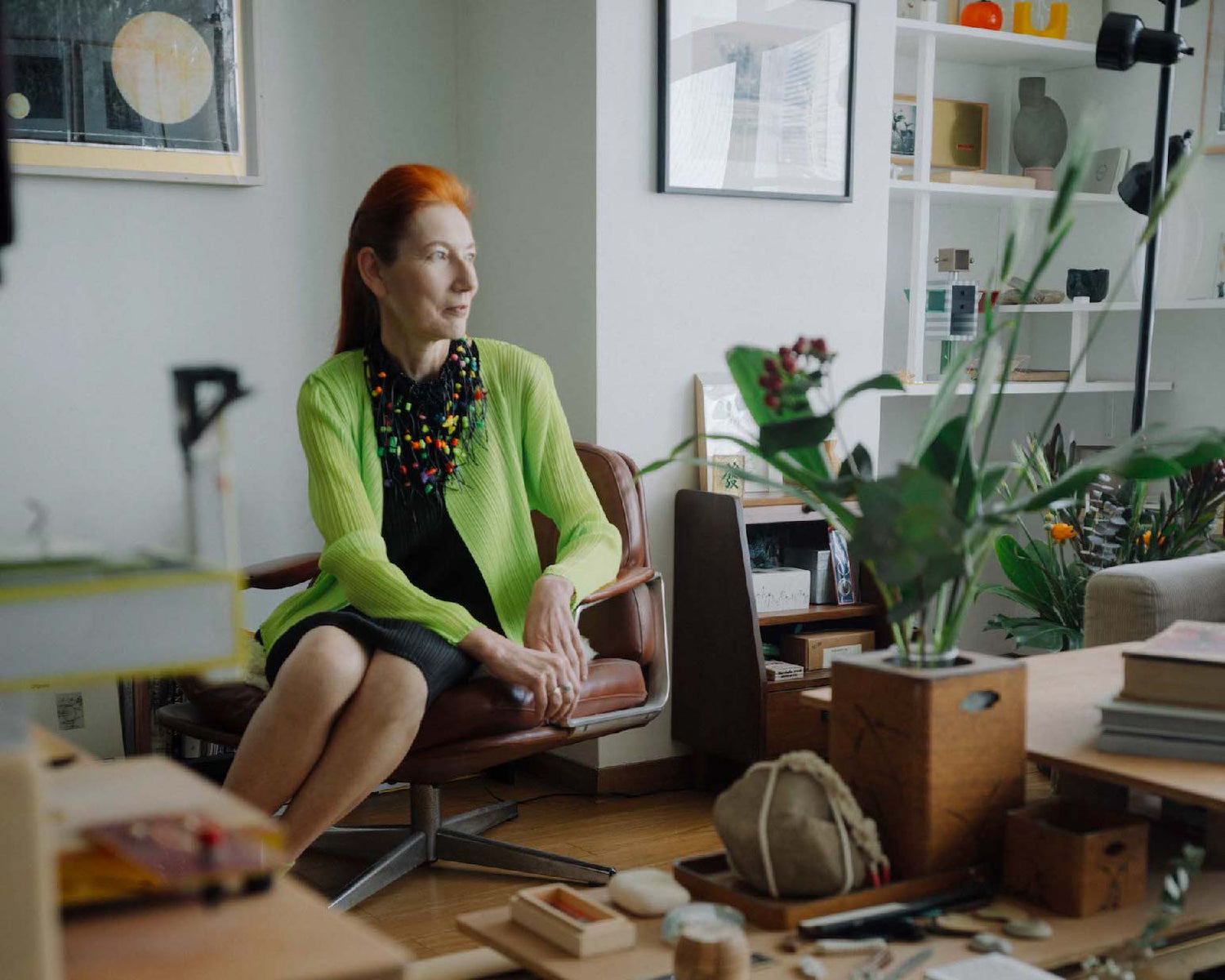
Hélène has loved PLEATS PLEASE ISSEY MIYAKE for many years.
“I have lots of them. I’ve never actually counted.”
Some of them she has brought to Tokyo from her home in Paris.
“I like to combine different colors and shapes, always inventing new ways to associate one to another. Obviously, I wear them to work, but also to attend openings, dinners, and parties. As well when traveling. PLEATS PLEASE are indeed the best outfits for any moment and any circumstances, you just have to select some accessories to adapt them to any occasion. They are the most versatile clothes I have ever found. I love that. And they are so light; for me, they are synonymous with freedom. There’s no other clothing quite like it.”
Today, she has chosen a black dress from PLEATS PLEASE ISSEY MIYAKE BASICS and a light green cardigan from NEW COLORFUL BASICS.
This is accented with a large necklace created by one of her designer friends, an IKKO TANAKA ISSEY MIYAKE’s bag and colorful socks. It is very Hélène.
This is a carousel of Image carousel: Article - PLEATS PLEASE ISSEY MIYAKE SPECIAL PROJECTS A day in the life of Hélène- Everyday life with Pleats Please Part 1. Use pagination to navigate through the items.. Use Play Slide Autoplay Button to autoplay/pause the carousel.
Worn by: Hélène Kelmachter—styling by Hélène, and accessories, bags and other small items are from her personal collection.
Photography: Kazumasa Harada
Hair and make-up: Hiroyuki Fuwa
Composition: Tamaki Harada + Mari Nakayama | Cawaii Factory
Concept and Direction: Midori Kitamura
PLEATS PLEASE ISSEY MIYAKE BASICS and NEW COLORFUL BASICS
Issey Miyake launched PLEATS PLEASE ISSEY MIYAKE in 1993 as a brand of apparel meant for everyone to enjoy. The variety of colors and shapes were immediately recognizable for the iconic pleating added to the simple shapes of the garments. Issey Miyake called it “PLEATS PLEASE” to mean “pleats that please people”.
The garments designed adhere to the PLEATS PLEASE philosophy of versatility, wearability, and simplicity in terms of washing, storage, and portability. The items are meant to bring joy to people’s daily lives.
BASICS and NEW COLORFUL BASICS are evolutions of the fundamental PLEATS PLEASE styles that have informed the brand from the beginning.










